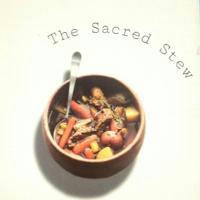In our native myths, we discover that the earth mother goddess is polyonomous like nearly all mythic beings—in Odin's wife Frigg, also called Fjorgyn and Hlodyn. As sons of her and Odin only, Thor (Völusp.) and Balder (Lokasenna) are definitely mentioned. In regard to the goddess Earth (Jord), Tacitus states (ch. 40), as a characteristic trait that she is believed to take a lively interest and active part in the affairs of men and nations (eam intervenire rebus hominum, invehi populis arbitrantur), and he informs us that she is especially worshipped by the Longobardians and some of their neighbours near the sea.
This statement, compared with the emigration saga of the Longobardians (No. 15), confirms the theory that the goddess Jord, who, in the days of Tacitus, was celebrated in song as the mother of Mannus' divine father, is identical with Frigg In their emigration saga, the Longobardians have great faith in Frigg, and trust in her desire and ability to intervene when the fate of a nation is to be decided by arms. Nor are they deceived in their trust in her; she is able to bring about that Odin, without considering the consequences, gives the Longobardians a new name; and as a christening present was in order, and as the Longobardians stood arrayed against the Vandals at the moment when they received their new name, the gift could be no other than victory over their foes.
Tacitus' statement, that the Longobardians were one of the races who particularly paid worship to the goddess Jord, is found to be intimately connected with, and to be explained by, this tradition, which continued to be remembered among the Longobardians long after they became converted to Christianity, down to the time when Origo Longobardorum was written.
Tacitus calls the goddess Jord Nerthus. Vigfusson (and before him J. Grimm) and others have seen in this name a feminine version of Njördr. The existence of such a form is not more surprising than that we have in Freyja a feminine form of Frey, and in Fjorgyn-Frigg a feminine form of Fjörgynr.
In our mythic documents, neither Frigg nor Njord are of Asa race. Njord is, as we know, a Van. Frigg's father is Fjörgynr (perhaps the same as Parganya in the Vedic songs), also called Annarr, Ánarr, and Ónarr, and her mother is Narve's daughter Night. Frigg's high position as Odin's real and lawful wife, as the queen of the Asa world, and as mother of the chief gods Thor and Balder, presupposes her to be of the noblest birth which the myth could bestow on a being born outside of the Asa clan, and as the Vans come next after the Asas in the mythology, and were united with them from the beginning of time, as hostages, by treaty, by marriage, and by adoption, probability, if no other proof could be found, would favour the theory that Frigg is a goddess of the race of Vans, and that her father Fjörgyn is a clan-chief among the Vans. This view is corroborated in two ways. The cosmogony makes Earth and Sea sister and brother. The same divine mother Night (Nat), who bears the goddess Jord, also bears a son Udr, Unnr, the ruler of the sea, also called Audr (Rich), the personification of wealth. Both these names are applied among the gods to Njord alone as the god of navigation, commerce, and wealth. (In reference to wealth compare the phrase audigr sem Njördr—rich as Njord.) Thus, Frigg is Njord's sister. This explains the attitude given to Frigg in the war between the Asas and Vans by Völuspa, Saxo, and the author of Ynglingasaga, where the tradition is related as history. In the form given to this tradition in Christian times and in Saxo's hands, it is disparaging to Frigg as Odin's wife; but the pith of Saxo's narrative is, that Frigg in the feud between the Asas and Vans did not side with Odin but with the Vans, and contributed towards making the latter lords of Asgard.
-Rydberg

